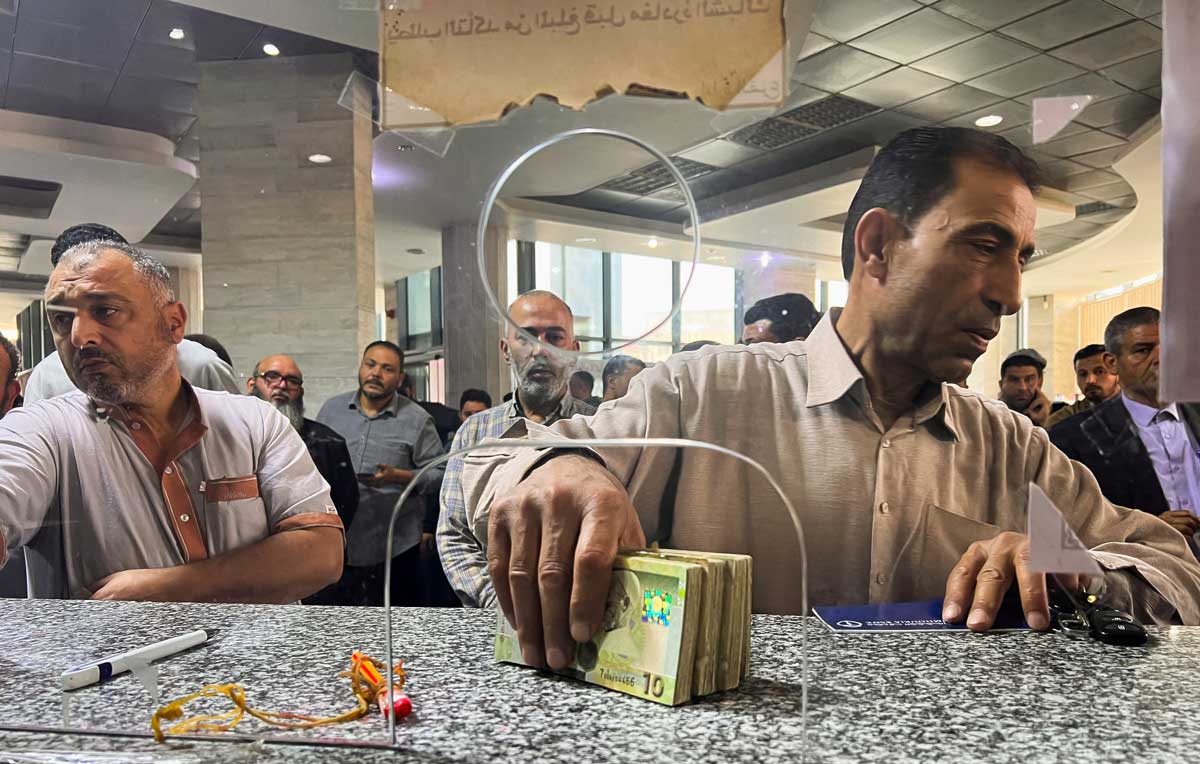Libya Tightens Cash Controls Via Digital Mandate
CBL’s digital clampdown formalizes trade and curbs FX leakage as BZ=F stays range-bound; adoption metrics guide risk premia while networks MA and V benefit from higher acceptance, signaling conditional monetary consolidation if execution holds.

Libya’s central bank is turning a merchant-compliance drive into a monetary instrument by ordering nationwide acceptance of electronic payments with municipal enforcement. The objective is explicit: reduce cash intensity, re-intermediate transactions into deposits, and tighten monetary transmission. In a cash-dominant economy where retail trade is largely settled off-bank, policy rates have weak traction and FX leakages persist. Mandating card and wallet acceptance pulls transactional liquidity into the banking perimeter, raises deposit bases, and improves the central bank’s control over reserve requirements, credit aggregates, and liquidity sterilization.
Mechanics link directly to macro levers. As merchants settle via POS and mobile wallets, cash balances migrate into sight and savings deposits. Higher deposit share lowers the system’s reliance on physical currency, compresses cash-premium financing costs, and lengthens liability duration at banks. Greater traceability reduces opacity that fuels parallel FX markets, narrowing unofficial spreads and reinforcing the dinar’s credibility. With more transactions on electronic rails, monetary statistics improve, enabling tighter calibration of liquidity operations and more predictable pass-through from policy moves to lending rates. The same rails support fiscal transparency by expanding the VAT and income-tax collection perimeter without rate hikes, improving cash-flow forecasting and smoothing budget execution.
Short-term frictions are material and must be priced. SMEs outside major cities face scarce POS infrastructure, patchy connectivity, and onboarding costs that compress thin margins. Typical merchant discount rates of 0.5–1.0% can deter compliance in low-margin retail segments. Enforcement via municipal guards introduces operational risk; abrupt suspensions can disrupt supply chains and push activity toward unregistered outlets. Without fee caps for micro-merchants, phased timelines, and hardware subsidies, the transition could replicate cash squeezes seen in other markets where rapid cash-to-digital shifts initially depressed retail volumes and strained ATM liquidity before networks stabilized.
The sovereign-bank channel is central to outcomes. Banks rationally overweight government paper when double-digit nominal yields and cash scarcity elevate risk-adjusted returns, crowding out private credit. If deposits rise and funding costs edge down, term premia on the local curve can compress, easing crowding-out and allowing working-capital rates for tradables and SMEs to decouple from cash scarcity premia. A broader electronic trail also reduces underwriting asymmetry, enabling risk-based pricing, lower loss-given-default assumptions, and incremental expansion of short-tenor facilities—small shifts that lift formal employment in trade and services, key urban job engines.
Global comparators show both promise and pitfalls. Nigeria’s 2023 cash-swap accelerated digital uptake but triggered near-term liquidity stress until mobile-money capacity expanded. Egypt’s 2022–2024 acceptance gains scaled only after merchant costs fell and rails improved. Libya’s execution risk is similar: interoperability between bank cards, wallets, and a national switch must be seamless; settlement times must be predictable; and dispute resolution must be standardized.
With Brent crude (BZ=F) oscillating in the upper-$70s, oil revenues remain the main FX buffer, but payments reform can lower the economy’s interest-rate beta by reducing cash premia and stabilizing pass-through, thereby moderating procyclical swings when hydrocarbon receipts fluctuate.
Market signaling is constructive but conditional. Libya lacks a deep equity benchmark or Eurobond curve to price the reform in real time, so investors will track adoption metrics as proxies for institutional capacity. If electronic payments take share from cash, parallel-market FX premia should compress, deposit velocity should slow toward nominal GDP growth, and local yield term premia should narrow as banks extend duration. Global networks such as Mastercard (MA) and Visa (V) stand to benefit from higher acceptance if fee structures and risk controls align with merchant economics, while regional processors gain volume and data that improve fraud models.
The policy signal is a pivot from accommodation to structural monetization control. Verification must be measurable and time-anchored. Over the next 6–12 months, three thresholds would confirm traction: the electronic-payments share of registered retail transactions sustained above 50%; growth in cash-in-circulation running below nominal GDP growth, indicating re-intermediation; and the parallel-market FX premium narrowing into single digits for at least two consecutive quarters. Secondary indicators include merchant-onboarding velocity, active terminals per 1,000 inhabitants, and average settlement times trending lower.
If these metrics improve concurrently, Libya will have converted a compliance edict into a durable monetary-control upgrade that lowers risk premia and supports formal sector credit. Failure—stalled adoption, widening FX premia, or widespread merchant closures—would entrench informality and erode the credibility dividend the central bank seeks.





